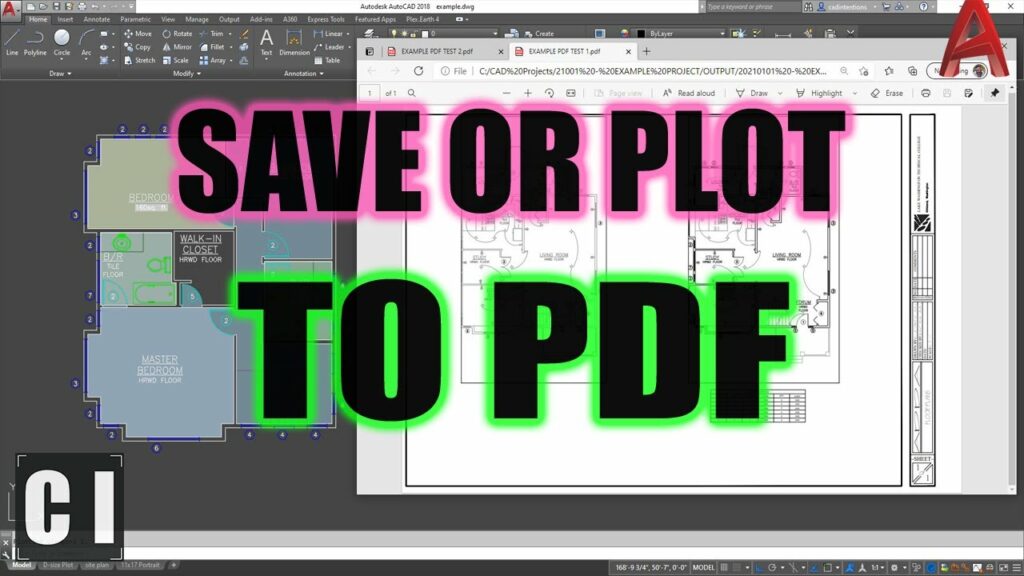Unleashing Document Portability: A Comprehensive Guide to Creating PDFs in AutoCAD

Introduction:
AutoCAD, the venerable software in the realm of computer-aided design (CAD), not only facilitates the creation of precise and intricate drawings but also offers robust tools for document management and sharing. Among these tools, the capability to create PDFs directly from AutoCAD drawings stands out as a pivotal feature. This extensive article delves into the intricacies of creating PDFs in AutoCAD, exploring the functionalities, applications, and the transformative impact this process has on document portability and collaboration within the CAD ecosystem.
Understanding PDF Creation in AutoCAD:
AutoCAD provides users with a seamless and integrated process for converting drawings into Portable Document Format (PDF). This feature empowers users to share their designs with collaborators, clients, or stakeholders in a universally accessible and platform-independent format. The PDF creation process in AutoCAD preserves the precision and fidelity of the original drawings while offering a standardized and widely accepted document format.
Key Features and Functionalities:
- High-Quality Vector Output: When creating PDFs in AutoCAD, the resulting files retain the inherent vector properties of the original drawings. This ensures that lines, text, and other design elements maintain their clarity and precision, crucial for accurate representation.
- Layer Information Preservation: AutoCAD’s PDF creation process preserves layer information from the original drawing. This feature allows recipients of the PDF to selectively view or toggle layers on and off, maintaining the integrity of the design and providing a versatile viewing experience.
- Customizable Settings and Page Layout: Users have the flexibility to customize various settings during the PDF creation process. This includes specifying the page size, layout, and other parameters, ensuring that the generated PDF aligns with project requirements and desired presentation formats.
- Hyperlink and Metadata Support: AutoCAD’s PDF creation supports hyperlinks and metadata, enriching the document with additional information and navigation capabilities. Users can include hyperlinks to external references or websites, enhancing the interactivity of the PDF document.
Applications of PDF Creation in AutoCAD:
- Client Presentations and Reviews: Creating PDFs from AutoCAD drawings is a standard practice for client presentations and design reviews. The universally accessible nature of PDFs allows clients and collaborators to view designs without requiring AutoCAD software, promoting effective communication and feedback.
- Document Archiving and Documentation: PDFs serve as a reliable format for archiving and documenting AutoCAD drawings. The creation of PDFs ensures that design data is preserved in a standardized, non-editable format, suitable for long-term storage, reference, or regulatory compliance.
- Collaboration in Multi-Platform Environments: In multi-platform environments where stakeholders may use different operating systems or devices, PDFs provide a common ground for collaboration. AutoCAD’s PDF creation enables seamless sharing and viewing across Windows, macOS, and various mobile platforms.
- Submission of Design Deliverables: Design deliverables often involve the submission of drawings for approvals, permits, or construction purposes. Creating PDFs streamlines this process, allowing designers to submit comprehensive and well-presented documents that can be easily shared and reviewed by project stakeholders.
Optimizing PDF Creation Workflow in AutoCAD:
- Utilizing the “Export to PDF” Feature: AutoCAD simplifies the PDF creation process through the “Export to PDF” feature. This option, accessible from the application menu, guides users through a straightforward workflow, offering customization options and settings for optimal PDF generation.
- Batch PDF Creation for Multiple Drawings: AutoCAD supports the batch creation of PDFs for multiple drawings simultaneously. This feature is particularly useful for projects with multiple sheets or when creating a standardized set of PDFs for distribution.
- Configuring Plot Styles and Line Weights: Configuring plot styles and line weights ensures that the PDF output accurately represents the visual aspects of the original drawing. AutoCAD provides options for specifying plot styles and adjusting line weights to meet specific visualization preferences.
- Embedding Fonts for Consistency: To ensure consistency in text representation, especially when sharing PDFs across different systems, AutoCAD allows users to embed fonts in the PDF document. This feature guarantees that the text appears as intended, regardless of the viewer’s system.
Conclusion:
In conclusion, the ability to create PDFs directly from AutoCAD drawings is a testament to the software’s commitment to enhancing document portability and collaboration. The PDF creation process in AutoCAD transforms intricate designs into universally accessible and shareable documents, transcending platform limitations. As AutoCAD continues to evolve, the PDF creation feature remains a fundamental tool for architects, engineers, and designers seeking efficient ways to communicate and share their designs. Embrace the power of creating PDFs in AutoCAD, and witness the seamless transformation of your drawings into a universally accessible medium, fostering collaboration and communication across the CAD landscape.




